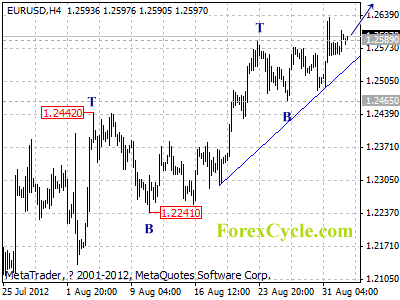China bulls used to deny that any sort of economic slowdown was possible for the country.
Once it became clear that the Chinese economy was indeed slowing down, the bulls said it would be a “soft”, well-managed landing.
But now that the landing is looking a lot harder than they’d expected, the bullish argument is that there will be a rebound in the second half of 2012.
However, the latest data suggests there’s little hope of that either.
So just how hard will China fall? And what does it mean for your money?
A Harder Landing in China than Most People Expected
China’s manufacturing sector shrunk in August, according to official figures. That was the worst showing in nine months, and worse than analysts had expected.
The unofficial figures were even worse. The HSBC Purchasing Manufacturing Index reported its worst figures since March 2009. HSBC’s index has now been falling for ten months in a row.
Optimists had been hoping that China’s economy would start to rally this quarter. Now that seems unlikely.
Never mind, say the China bulls. China has plenty of room to “loosen monetary policy”. Indeed, shares in Asia were boosted by the bad data, because of hopes that China will go on a spending spree now.
However, looser monetary policy was what the bulls pinned their hopes on when it became clear the Chinese economy was slowing at the start of the year. Yet it hasn’t had a big impact so far.
For example, the deterioration in the official manufacturing figures was ‘driven by a worsening of conditions for large firms’, notes Qinwei Wang of Capital Economics.
What’s significant about that? Well, China has been loosening monetary policy recently, which had encouraged the bulls. However, ‘large firms tend to be the first beneficiaries of policy loosening. The fact that they are still struggling does not bode well for hopes of a rapid rebound.’
There are other factors beyond monetary policy affecting the Chinese economy. There’s the political handover this year, for one thing. Bulls have been arguing that China would try to ensure the Chinese economy was looking healthy for when the new leaders take over this year.
Yet Paul Glasson of Satori Investments tells The Australian newspaper that the handover process is part of the problem. The change in government is holding up the development of new projects.
The trouble is that ‘many projects are developed at provincial level’. With changes sweeping through the ranks at all levels, it is ‘impossible to progress with meaningful investment’.
Of course, the worse the data gets, the more chance there is that the Chinese will embark on a big push. But that would be bad news too. Given the political confusion, capital will be misallocated even more badly than in the past.
Caixin Online: ‘overcapacity is still severe in most industries’. To get rid of the overcapacity, companies need to cut production. But that won’t happen if they’re being pushed to maintain production to sustain GDP figures.
In turn, this ‘will prolong the vicious cycle’, with over-production leading to falling commodity prices and making the eventual reckoning all the harder.
Don’t Bet on the Fed to Bail Out the Rest of the World
China’s woes are one of the main reasons why we would keep avoiding the industrial mining sector, as I noted last week. But wouldn’t more quantitative easing (QE) in the US also boost risky, cyclical sectors like the miners?
It probably would – in the short term at least. But I wouldn’t be betting on more QE from Ben Bernanke either.
At his Jackson Hole speech on Friday, the Fed chief reiterated that the Fed would act ‘as needed’. But that doesn’t mean much. That’s just part of the Fed’s basic job description. Looking at the figures, there’s no clear reason for the US to print money yet.
The US economy is looking fragile, no doubt about it. But as Jim Paulsen of Wells Capital Management points out in the FT, the best thing that could happen is for the US to get over this particular “soft patch” without any more money-printing from the Fed.
This ‘would boost confidence by creating a sense of a much more sustainable, less monetarily addicted economy’.
Even if Bernanke doesn’t agree with this view, it would be hard for him to justify any heroic action from the Fed, not of the sort that would send stock markets soaring. As we’ve noted already, the first and second batches of QE took place against a backdrop of panic. That’s not present right now.
QE3 may well materialise – eventually. And the Chinese might panic and print a ton more money, although that would be the worst thing to do for the Chinese economy in the long run.
But investors will have to endure a lot more pain before either event happens. That’s why we’d favour European over US stock markets right now – Europe is priced for hard times, whereas the US is priced rather more optimistically.
John Stepek
Contributing Editor, Money Morning
Publisher’s Note: This is an edited version of an article that originally appeared in MoneyWeek
From the Archives…
Why There’s No Such Thing as a Floor Price Just the Market Price
31-08-2012 – Kris Sayce
Take Advantage of the High Australian Dollar While You Can
30-08-2012 – Greg Canavan
Smartphone, Dumb Patents
29-08-2012 – Jeffrey Tucker
Find Out if You’re a Speculator, Value Investor or Stock Trader
28-08-2012 – Nick Hubble
Why Green Energy Will Struggle Against a 790,000 Year Habit
27-08-2012 – Kris Sayce

 Who is Jim Martens?
Who is Jim Martens?